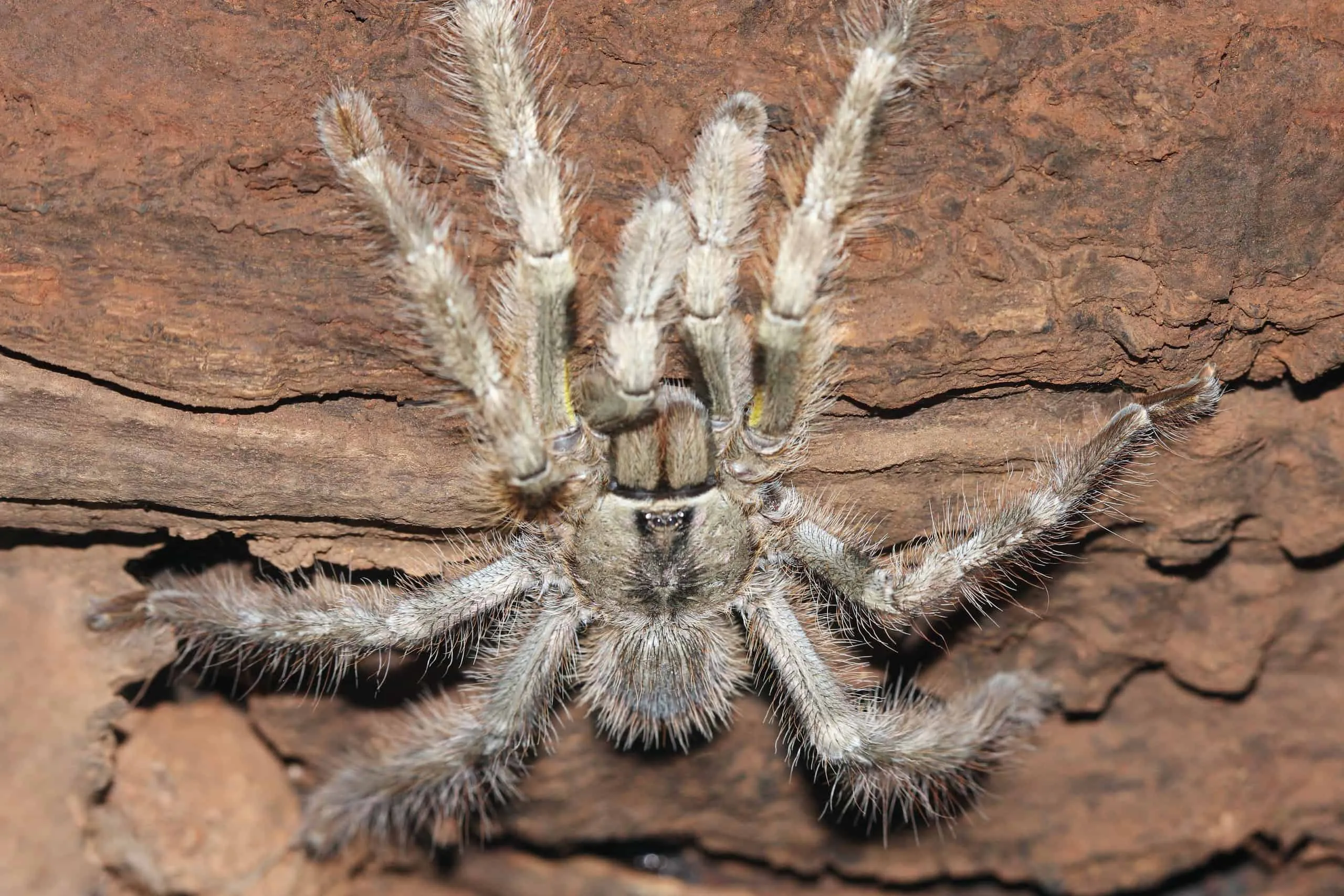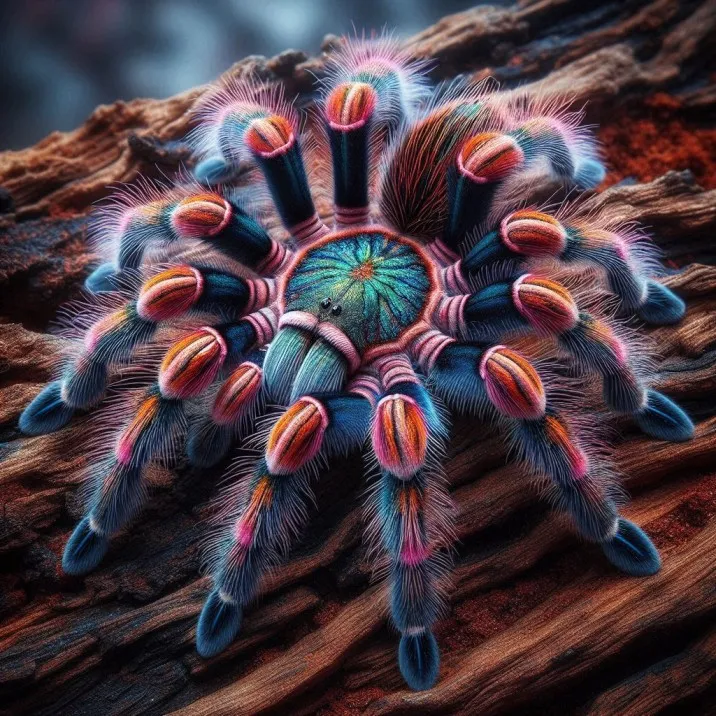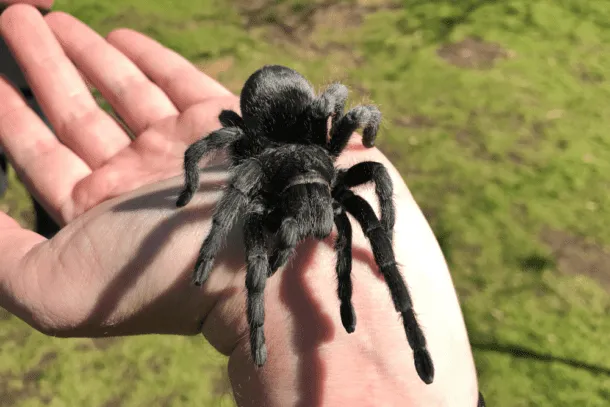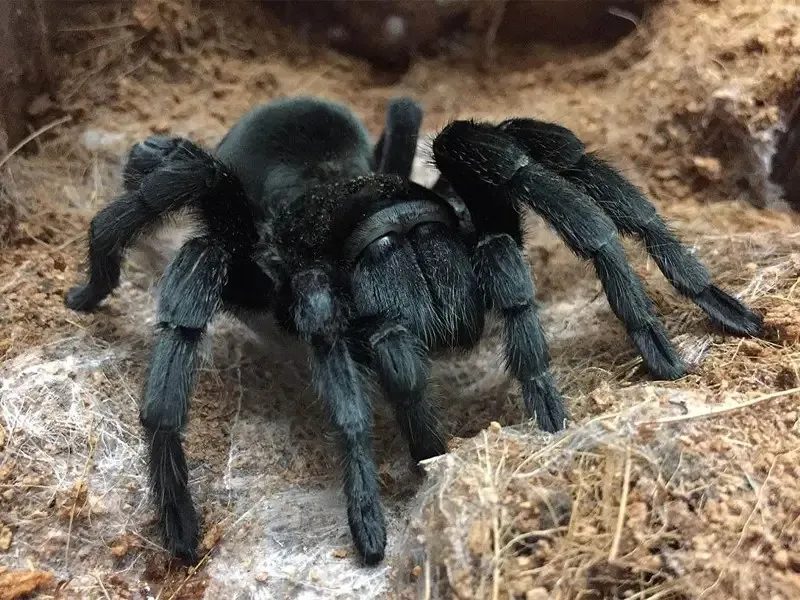What is the Average Brazilian Tarantula Lifespan
The Brazilian tarantula (Lasiodora parahybana), a popular pet due to its impressive size and relatively docile temperament, captivates many enthusiasts. A fundamental question that arises when considering this arachnid as a pet is its lifespan. Understanding the Brazilian tarantula lifespan is crucial for prospective owners, as it directly influences the commitment involved in caring for these creatures. Generally, the average lifespan of a Brazilian tarantula varies, primarily depending on its sex. Females tend to live significantly longer than males. This difference is a key factor in the overall care plan and expectations for owning one of these large spiders. Several environmental and care-related factors also affect lifespan, adding another layer of complexity to this fascinating aspect of tarantula ownership. Thus, exploring the nuances of their life cycle is essential for anyone interested in keeping these impressive spiders.
Male vs Female Brazilian Tarantula Lifespan
The most striking difference in the Brazilian tarantula lifespan is between males and females. Females are known for their longevity, often living between 15 to 25 years under optimal conditions. This extended lifespan makes them a long-term commitment, appealing to those who seek a pet they can enjoy for many years. Males, however, have a much shorter lifespan, typically ranging from 3 to 5 years. This significant difference is primarily due to their biological roles in reproduction. Males reach maturity faster and their primary function is to mate, after which their lifespan is considerably shortened. The shorter lifespan of males highlights the importance of understanding their specific needs and care requirements, especially after they reach maturity. Knowing the sex of your Brazilian tarantula is therefore critical in anticipating its lifespan and planning its care accordingly. Image: brazilian-tarantula-male-female.webp
Factors That Influence Brazilian Tarantula Lifespan

Several factors influence the Brazilian tarantula lifespan, beyond just the sex of the spider. Creating an ideal environment is critical to maximizing their longevity. These factors range from the immediate physical environment to the quality of the food they consume. Each aspect plays a vital role in the overall health and wellbeing of the tarantula. Owners who pay close attention to these variables can significantly enhance the lifespan of their pets. It is crucial to understand the specifics of each factor to ensure the best care. Factors, such as temperature, humidity, diet, and enclosure setup, impact the overall well-being of the tarantula. Each of these should be monitored to maintain the quality of life of the tarantula. It is vital to provide a comfortable habitat, balanced diet, and attentive care.
Temperature and Humidity
Temperature and humidity are two of the most important environmental factors that directly impact the Brazilian tarantula lifespan. These spiders thrive in warm and humid environments, which mimic their natural habitat. Maintaining the correct temperature range is vital for their metabolism and overall health. A temperature between 75°F to 85°F (24°C to 29°C) is generally considered ideal. Humidity levels should be maintained between 60% to 70%. Regularly monitoring these conditions is essential, often using a digital thermometer and hygrometer. Providing proper ventilation is equally important, to prevent mold growth and ensure air quality. Regular misting of the enclosure helps maintain humidity, but care should be taken not to over-saturate the substrate, as this can lead to health problems. Image: brazilian-tarantula-humidity.webp
Diet and Nutrition
A balanced diet is another cornerstone of a long and healthy Brazilian tarantula lifespan. These tarantulas are primarily insectivores, and their diet should consist mainly of live insects. Crickets, roaches, mealworms, and other readily available insects are suitable choices. The size of the insects should be appropriate for the tarantula’s size, and any uneaten food should be removed after a day to prevent mold growth and maintain hygiene. Overfeeding should be avoided, as obesity can shorten the lifespan. Provide a varied diet and occasional supplements. Providing access to fresh water is also crucial. A shallow water dish should be available at all times, ensuring the tarantula can drink without risk of drowning. Image: brazilian-tarantula-feeding.webp
Enclosure Size and Setup

The enclosure size and setup also affect the Brazilian tarantula lifespan. They require a spacious enclosure to move and behave naturally. The size of the enclosure should increase as the tarantula grows. The enclosure should have enough substrate, such as coconut fiber or peat moss, to allow the tarantula to burrow. Providing a hide or shelter is also essential, as it provides a sense of security and helps the tarantula manage stress. The enclosure should be well-ventilated to maintain air quality and prevent mold growth. Regular cleaning of the enclosure is important to prevent the buildup of waste and bacteria. The enclosure size must be adequate for the tarantula size to provide it comfort. Image: brazilian-tarantula-habitat.webp
Genetic Factors and Health
Genetic factors and overall health also affect the Brazilian tarantula lifespan. The health of the tarantula is directly impacted by its genetics, which can influence susceptibility to diseases and overall vitality. Purchasing a tarantula from a reputable breeder can reduce the risk of genetic health issues. Regular health checks and preventative care are essential in detecting and addressing potential health problems early. These can be crucial in improving the lifespan of the tarantula. Observing your tarantula for signs of illness, such as lethargy, loss of appetite, or unusual behavior, is a part of regular health checks. Prompt veterinary care is necessary if health problems are detected. Image: brazilian-tarantula-healthy.webp
How to Extend Your Brazilian Tarantula’s Lifespan
Providing proper care for your Brazilian tarantula can significantly increase its lifespan. The measures that you take in terms of housing, diet, and health monitoring are key in maximizing their life expectancy. The implementation of these measures can help you ensure that your tarantula lives a long and healthy life. By implementing these guidelines, owners can help ensure their pets enjoy a long and healthy life. Ensuring the health and longevity of these fascinating creatures involves a combination of informed care and proactive management of their living conditions. The owner is critical in ensuring the tarantula will have a great quality of life and a long life.
Provide Proper Housing

Proper housing is the first step in extending the lifespan. The enclosure should be large enough for the tarantula to move comfortably, with sufficient space for burrowing and exploration. The substrate should be deep enough to allow for burrowing, which provides the tarantula with security and helps regulate humidity. Providing a hide or shelter is also essential, as it offers a safe space and reduces stress. The enclosure should have good ventilation to prevent mold and maintain air quality. The setup should be easy to clean and maintain, ensuring a healthy environment for the tarantula. The enclosure setup should facilitate the tarantula’s ability to thrive. Image: brazilian-tarantula-habitat.webp
Feed a Balanced Diet
Feeding a balanced diet is another critical factor in extending the lifespan. A varied diet of live insects is essential. Crickets, roaches, and other suitable insects should form the basis of their diet. The insects should be gut-loaded before feeding to the tarantula. The size of the insects should be proportional to the size of the tarantula. Overfeeding should be avoided to prevent obesity, which can shorten lifespan. Always provide access to fresh, clean water. Adjust the feeding schedule according to the tarantula’s growth stage and metabolism. A well-nourished tarantula is more likely to live a longer, healthier life. Image: brazilian-tarantula-feeding.webp
Maintain Optimal Humidity and Temperature
Maintaining the correct environmental conditions is critical for the Brazilian tarantula lifespan. The temperature should be maintained between 75°F and 85°F, with humidity levels between 60% and 70%. Regular monitoring with a digital thermometer and hygrometer is crucial. Mist the enclosure regularly to maintain humidity, but avoid over-saturation. Adequate ventilation is essential to prevent the build-up of mold and maintain air quality. Keeping these parameters within the correct ranges will contribute to the overall health and longevity of the tarantula. The appropriate environmental conditions are essential for the tarantula to thrive. Image: brazilian-tarantula-humidity.webp
Regularly Monitor Your Tarantula’s Health

Regular health monitoring is crucial for extending the lifespan of the Brazilian tarantula. Regularly observe the tarantula for any signs of illness, unusual behavior, or changes in appetite. Check for any injuries or abnormalities during routine inspections. Be proactive in addressing any health concerns. Provide preventative care and a clean environment. Proper hygiene and habitat maintenance are vital to prevent disease. It is crucial to have a veterinarian experienced in exotic pets. Promptly address any health concerns. An active owner can play a significant role in detecting early health issues. Early detection often allows for timely intervention. Image: brazilian-tarantula-health-check.webp
Common Health Issues
Brazilian tarantulas, like all animals, are susceptible to certain health issues. Understanding these common problems can help owners take preventative measures and respond appropriately. Common issues can potentially reduce the Brazilian tarantula lifespan if left unattended. Knowing the common problems will help provide a higher quality of life for the pet.
Moulting Problems
Moulting is a critical process for tarantulas. It is the process where they shed their exoskeleton to grow. Problems during moulting can be life-threatening. Ensuring appropriate humidity is crucial, as it facilitates the moulting process. Sometimes, a tarantula can get stuck in their old exoskeleton. If the tarantula struggles to moult, it can indicate problems with humidity. The owner can assist by gently misting the tarantula, or providing a humid hide. Never force the tarantula to moult. Providing the correct environmental conditions helps prevent moulting issues. Monitor your pet regularly during moulting. Image: brazilian-tarantula-molting.webp
Parasites and Pests

Brazilian tarantulas can also be affected by parasites and pests. External parasites, like mites, can infest the tarantula, causing irritation. Internal parasites are less common but can affect the tarantula’s health. Preventing parasite infestations involves careful hygiene and regular cleaning. Quarantine new tarantulas before introducing them to existing collections. Inspect the enclosure and the tarantula regularly for signs of pests. If pests are detected, consult with a vet for appropriate treatment. Preventative measures will help reduce the risk of infestation. Image: brazilian-tarantula-parasites.webp
Conclusion
Understanding the Brazilian tarantula lifespan is essential for anyone considering this pet. The average lifespan is primarily influenced by the tarantula’s sex, with females generally living significantly longer than males. Several factors, including environmental conditions, diet, and health, play a critical role in determining the lifespan. By providing the correct housing, a balanced diet, and proper health monitoring, owners can greatly increase the lifespan of their Brazilian tarantulas. These measures ensure that these fascinating creatures live long and healthy lives, offering their owners years of enjoyment. The care and the owner’s actions are critical to the lifespan of the tarantula. By following these guidelines, owners can help maximize the lifespan of their Brazilian tarantulas and provide them with a fulfilling life. Image: brazilian-tarantula-healthy.webp
